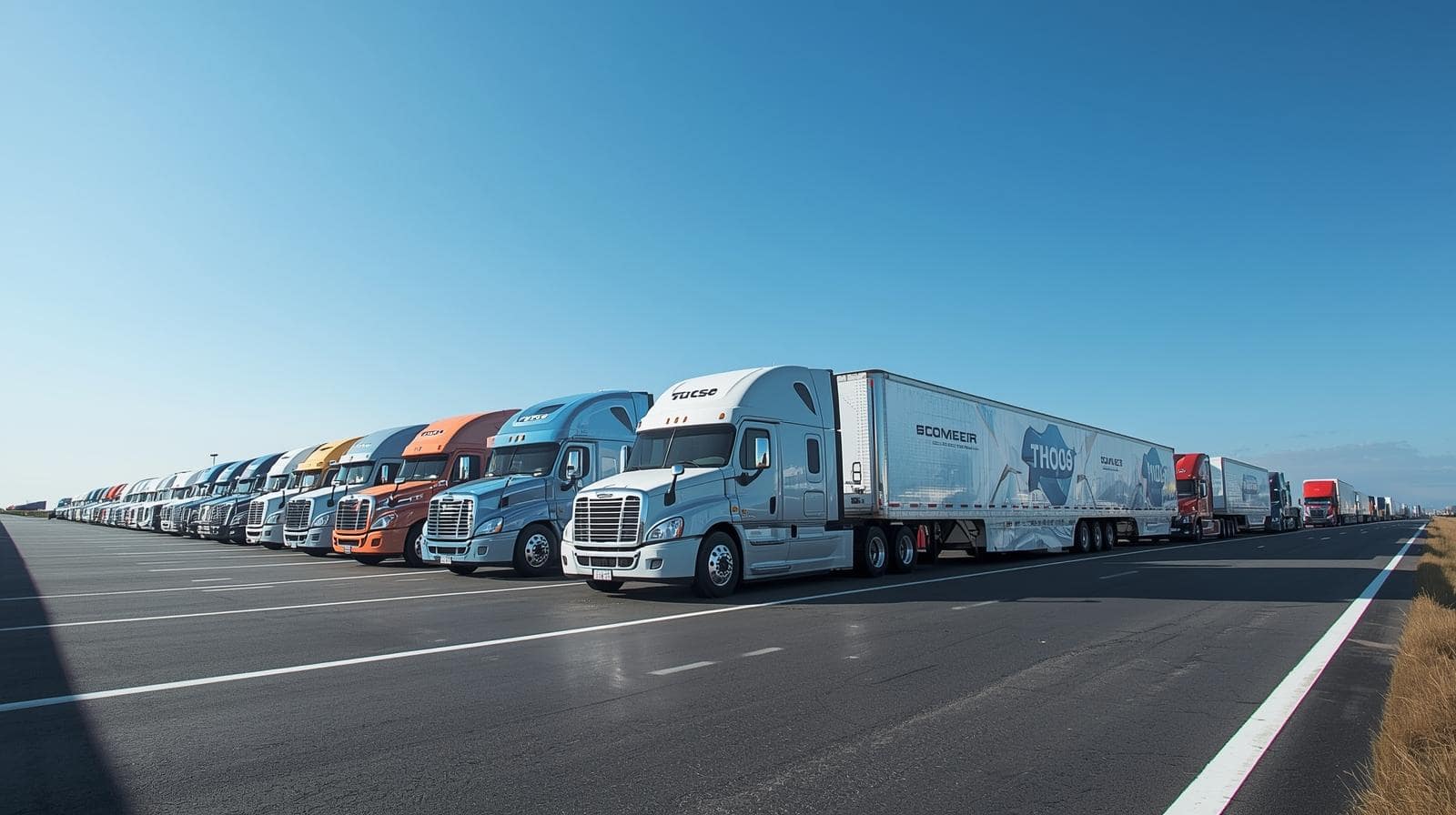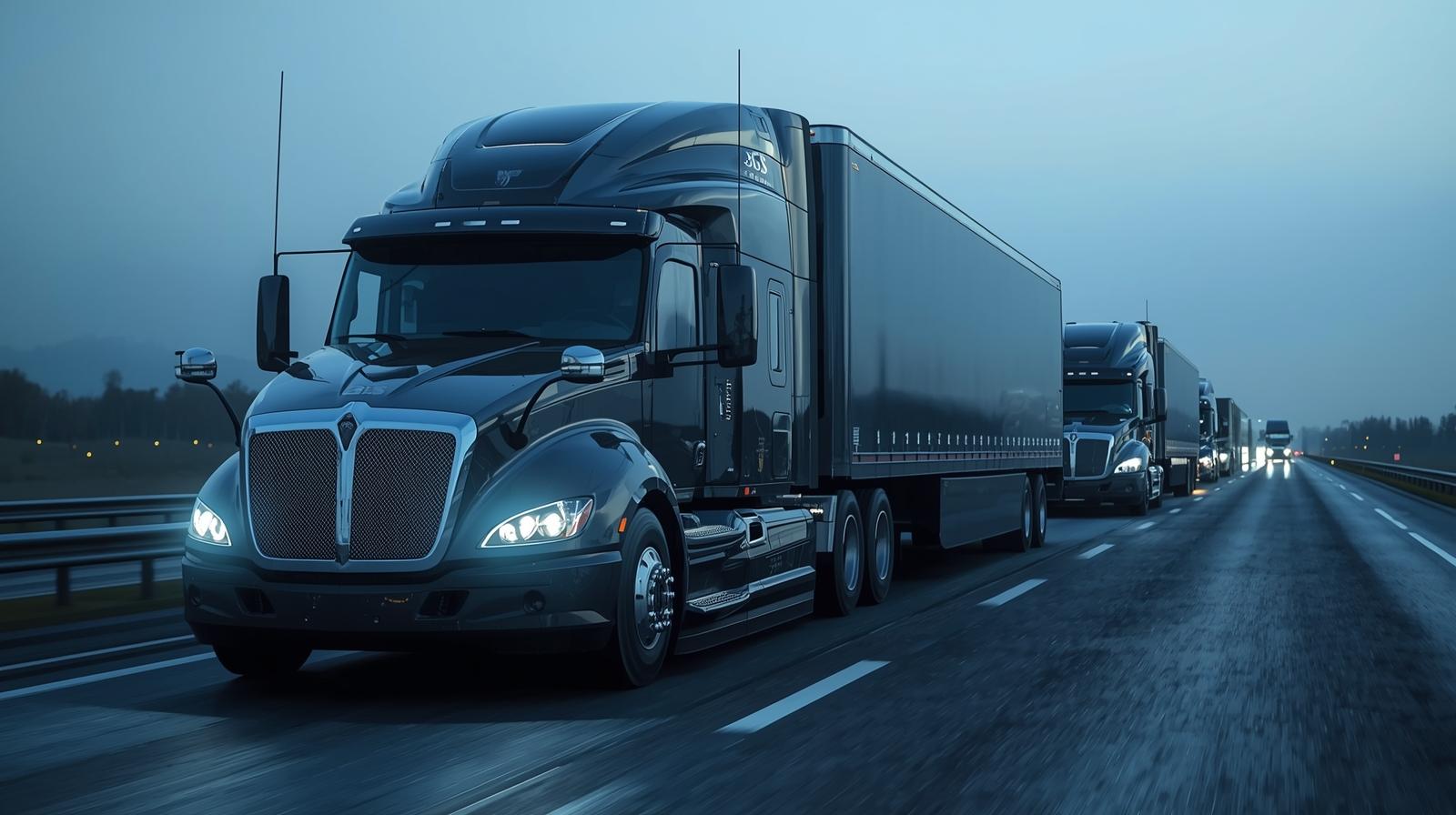Contents
- Fuel Efficiency as a Profit Lever
- The Power of ELD Data
- Turning Insights Into Action
- Benefits Beyond the Bottom Line
- ELD Data as a Competitive Advantage
- Long-Term Impact
- Emerging Opportunities with AI and ELD
- Challenges and Solutions
- Future Outlook
- FAQ
Fleets cut emissions and costs by using ELD data to optimize fuel efficiency. Smarter routing, driver behavior insights, and compliance tools reduce carbon footprint and boost profitability.
Fuel Efficiency as a Profit Lever
Fuel accounts for up to 40% of total operating costs in trucking. That figure alone shows why fleets can’t afford waste. Every unnecessary idle minute or extra mile driven adds up quickly. When fuel efficiency improves, the savings flow straight into profitability. A truck that gains even one extra mile per gallon can save thousands of dollars annually. Across an entire fleet, the difference reaches millions. Cutting carbon emissions becomes a side effect of smart business.
The Power of ELD Data
Electronic Logging Devices were mandated for compliance, but they’ve become much more than regulatory tools. They generate massive streams of data about how drivers operate and how trucks perform.
- Speed variations — constant speeding and braking burn more fuel.
- Idle reports — highlight where trucks waste fuel at loading docks or rest stops.
- Route inefficiencies — expose detours and congested patterns that drain miles per gallon.
- Maintenance indicators — reveal engine inefficiency before breakdowns occur.
This is intelligence that paper logs could never provide. Fleets that ignore ELD data leave both money and competitive advantage on the table.
Turning Insights Into Action
The value of data emerges only when it shapes decisions. Fleets use ELD dashboards to guide operational changes that deliver real savings.
- Driver coaching programs cut aggressive acceleration and heavy braking, improving both safety and fuel burn.
- Dynamic route planning integrates real-time traffic and weather, avoiding wasted miles.
- Maintenance optimization ensures tire pressure, engine performance, and aerodynamics stay in peak condition.
- Idle reduction policies leverage data alerts, reminding drivers to shut down engines when waiting.
Each initiative compounds. Over a year, these adjustments reduce both carbon output and operating costs dramatically.
Benefits Beyond the Bottom Line
Cutting emissions is not just about corporate responsibility — it’s about winning business. Many shippers now include sustainability metrics in their selection criteria. Fleets that show measurable carbon reductions gain contracts that competitors lose.
Other benefits ripple across the business:
- Regulatory compliance — states like California enforce strict emissions limits; proactive fleets avoid penalties.
- Customer loyalty — shippers value providers aligned with their sustainability goals.
- Community reputation — fleets that reduce emissions strengthen their social license to operate.
- Employee engagement — drivers and staff take pride in being part of a forward-looking company.
Green performance becomes part of the fleet’s brand.
ELD Data as a Competitive Advantage
| Metric | Without ELD Insights | With ELD Insights |
| Idle Time | Hidden and costly | Tracked, managed, and reduced |
| Fuel Efficiency | Estimated averages | Optimized with precise, real-time data |
| Driver Performance | Based on guesswork | Measured with accuracy and fairness |
| Compliance | Time-consuming manual records | Automated and audit-ready |
| Carbon Emissions | Unmonitored | Quantified and progressively lowered |
The gap resembles running a business with outdated maps versus modern GPS — one is guesswork, the other is strategic clarity.
Long-Term Impact
Large fleets that integrate ELD data with fuel management programs often cut annual fuel consumption by 10–20%. That translates into tens of millions in savings and significant reductions in carbon output. These improvements are not short-term fixes; they build ongoing efficiency into fleet DNA.
As regulators tighten environmental standards and customers demand sustainable partners, fleets with demonstrable progress will lead the market. Those without measurable reductions risk losing contracts, paying fines, and falling behind in a competitive industry.
Emerging Opportunities with AI and ELD
AI expands the value of ELD data by predicting fuel burn, optimizing routes in real time, and recommending coaching strategies tailored to each driver. Machine learning can detect patterns invisible to humans, like subtle shifts in fuel efficiency linked to specific weather conditions or trailer loads. By combining ELD with predictive AI, fleets gain foresight rather than just hindsight.
This creates a proactive system — one where inefficiencies are corrected before they cost money or emissions rise.
Challenges and Solutions
Transitioning to ELD-driven efficiency isn’t without friction.
- Driver pushback — some drivers view monitoring as surveillance. Framing ELD as a coaching tool with performance bonuses reduces resistance.
- Data overload — managers can feel buried under endless reports. Using visualization dashboards filters key insights.
- Integration issues — legacy systems may resist data sync. APIs and middleware bridge these gaps.
- Upfront investment — software and training require a budget. But ROI in fuel savings alone usually covers costs within 12–18 months.
Each challenge has proven solutions. Trucking fleets that commit early realize benefits faster.
Future Outlook
By 2030, fleets that fail to optimize fuel consumption with ELD (Electronic Logging Device) data will no longer represent the norm — they will be the exceptions. Escalating fuel costs, tightening emissions regulations, and growing pressure from customers will make data-driven efficiency an industry standard rather than an option.
Carbon Reporting as a Contractual Standard
Carbon reporting will be fully embedded in logistics contracts and service-level agreements (SLAs). Shippers and carriers alike will be required to provide transparent, verifiable data on emissions per mile, per delivery, and per customer. Instead of periodic sustainability reports, emissions data will be standardized, continuous, and real-time, as essential to operations as delivery ETAs are today.
Rising Customer Expectations
By the end of the decade, customers will expect real-time sustainability dashboards alongside shipment tracking. Emissions performance will appear next to delivery status updates, and the “green score” of a shipment may become as critical a KPI as on-time performance. Companies that cannot provide this visibility risk losing business to those that can.
Competitive Advantage for Early Leaders
Fleets that lead in fuel efficiency today are not just cutting costs; they are securing their future market position. By demonstrating operational excellence and embracing transparency, these fleets will:
- Win contracts from sustainability-focused shippers.
- Reduce regulatory exposure in regions with strict emissions rules.
- Strengthen their reputation as leaders in efficiency and responsibility.
Operational Transformation
Efficiency in 2030 will extend far beyond vehicle hardware. It will involve:
- Predictive analytics drawn from ELD and telematics data.
- Dynamic route optimization balancing time, cost, and emissions.
- Automated reporting systems integrated with compliance frameworks.
- The adoption of alternative fuels and electrification strategies, guided by performance data.
In summary: By 2030, ignoring fuel optimization and carbon reporting will be a competitive liability. Fleets that invest now in efficiency, transparency, and real-time emissions tracking will dominate the logistics landscape — not only by reducing carbon output but by proving unmatched operational excellence.
FAQ
How much can ELD data reduce carbon footprint?
Most fleets achieve 10–20% reductions in fuel use, directly cutting CO₂ emissions.
Does monitoring hurt driver morale?
When paired with incentives, ELD data boosts morale by rewarding efficient drivers.
Can small fleets compete with big carriers on sustainability?
Yes. Even a five-truck fleet can leverage ELD insights to cut costs and win eco-focused contracts.
Is technology expensive?
The upfront cost is offset quickly by fuel savings and avoided penalties, often within the first year.










